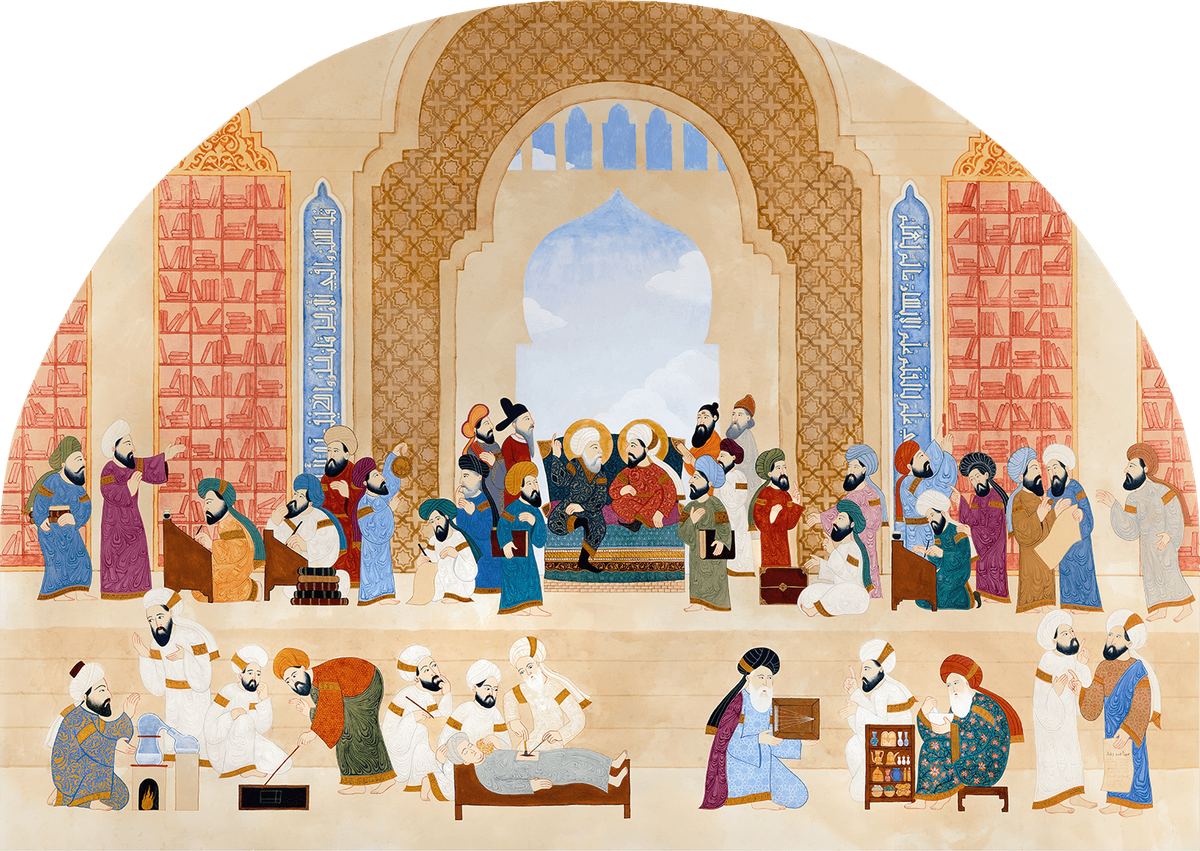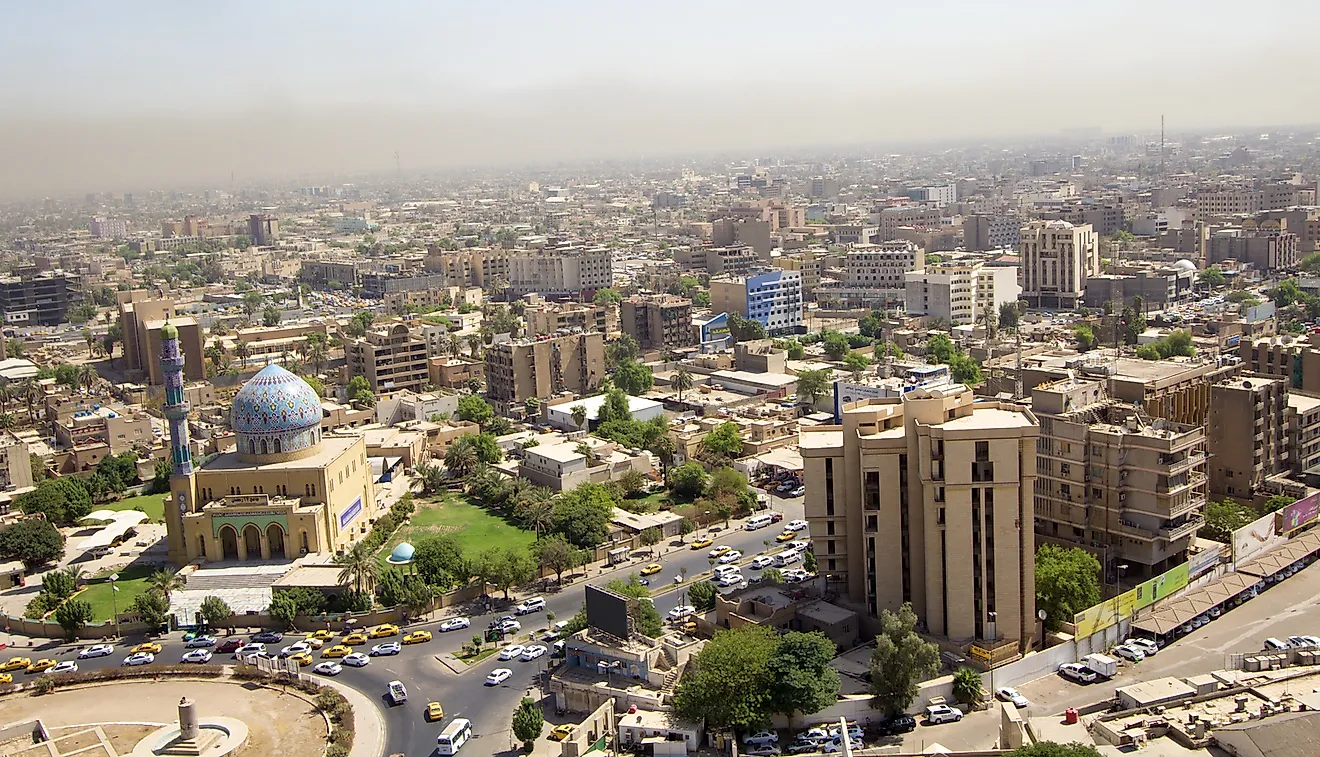Table Of Content

Over the past two decades, there has been a multi-front Iraqi struggle for the future of their country. In 2019, Iraqi youth expressed their aspirations for a better life and a country free of Iranian influence through a peaceful protest movement. In 2021, key political Shia, Sunni and Kurdish forces capitalized on early elections that the protest movement, supported by Grand Ayatollah Ali Al-Sistani, ushered in to assert Iraqi agency over the country’s direction. The U.S., the international community and many Iraqis were excited over these developments. However, they were thwarted by competing efforts from Iran-backed groups among others, giving rise to the Coordination Framework — which itself also includes groups supported by Iran — that ultimately formed the al-Sudani government in alliance with Sunnis and Kurds. Planned middle-class neighbourhoods are located between the bund and the Army Canal, which connects the Tigris and Diyālā rivers.
Halls of Ancient Wisdom: 7 Remarkable Ancient Libraries
The House of Wisdom: One of the Greatest Libraries in History - Ancient Origins
The House of Wisdom: One of the Greatest Libraries in History.
Posted: Sun, 01 Jan 2017 08:00:00 GMT [source]
The masterplans of the city (1967, 1973) were delivered by the Polish planning office Miastoprojekt-Kraków, mediated by Polservice.[83] However, the Iran–Iraq War of the 1980s was a difficult time for the city, as money was diverted by Saddam Hussein to the army and thousands of residents were killed. Iran launched a number of missile attacks against Baghdad in retaliation for Saddam Hussein's continuous bombardments of Tehran's residential districts. In 1991 and 2003, the Gulf War and the US invasion of Iraq caused significant damage to Baghdad's transportation, power, and sanitary infrastructure as the US-led coalition forces launched massive aerial assaults in the city in the two wars. Also in 2003, a minor riot in the city (which took place on 21 July) caused some disturbance in the population. The historic "Assyrian Quarter" of the city, Dora, which boasted a population of 150,000 Assyrians in 2003, made up over 3% of the capital's Assyrian population then.

InventionsLondon, United Kingdom
This recognition about who was the original founder of the center can become confusing and further details explaining the order of events might assist in this understanding. Al-Rashid was the one who gathered most of the different books, manuscripts and objects coming from his father and grandfather, and started the collection. Eventually this compilation of different materials became so large that al-Ma’mun had to build an extension to the original building, turning it to a large academy which, then, came to be known as the House of Wisdom.
The World’s First Collectors, Museums And Libraries Of Antiquity

Curated by al-Rashid’s father and grandfather, the collection spanned various subjects in the arts and sciences. Three decades later, the collection had grown so large that al-Rashid’s son, Caliph Al-Mamun (ruled 813–833 CE), built extensions to the original building and turned it into a large academy named Bayt al-Hikma (the House of Wisdom). The House of Wisdom was the largest repository of books in the world by the middle of the ninth century and became the leading center for various branches of study, including mathematics, astronomy, medicine, alchemy, chemistry, zoology, geography, and cartography. There has been different opinions on the identity of the founder of the Abbasids' House of Wisdom. He was the first caliph who motivated Muslims to study sciences and develop them, he also advised them to translate books from Persian, Greek, and Indian languages.
Later, he added numerous other study centres to allow more scholars to pursue their research, and an observatory in 829. The father of Arabic prose, he translated and adapted a wealth of works from Persian, including his renowned Kalila wa Dimna, an adaptation of the ancient Indian collection of tales and fables Panchatantra, which would inspire the 17th-century French poet Jean de La Fontaine centuries later. Additionally, each of the translations was annotated by scholars from the field in an effort to explain the sciences to the general public. It was even said that translators were awarded the weight of each successfully completed book in gold. The Abbasid caliphs’ appetite for knowledge was such that an entire body of classical scientific literature - including works by Aristotle, the Greek physician Galen and the Indian surgeon Sushruta - was translated into Arabic, thanks to the House of Wisdom.
Between 813 and 833, the three brothers were successful in their works in science, engineering, and patronage. Abū Jaʿfar, Muḥammad ibn Mūsā ibn Shākir (before 803 – February 873), Abū al‐Qāsim, Aḥmad ibn Mūsā ibn Shākir (d. 9th century) and Al-Ḥasan ibn Mūsā ibn Shākir (d. 9th century) are widely known for their Book of Ingenious Devices, which describes about one hundred devices and how to use them. Among these was “The Instrument that Plays by Itself”, the earliest example of a programmable machine, as well as the Book on Measurement of Plane and Spherical Figures. Mohammad Musa and his brothers Ahmad and Hasan contributed to Baghdad’s astronomical observatories under the Abbasid Caliph al-Ma’mun, in addition to the House of Wisdom research. Having shown much potential, the brothers were enrolled in the library and translation center of the House of Wisdom in Baghdad. They began translating ancient Greek into Arabic after quickly mastering the language, as well as paying large sums to obtain manuscripts from the Byzantine Empire for translation.
Clearly, there are many areas of mutual interests for Iraq and the United States to energize and build bilateral relations further. Several of al-Sudani’s predecessors also sought similar objectives, each under rather unique circumstances, making some progress but not gaining sufficient momentum. The change of times, the Coordination Framework’s support for al-Sudani’s visit and his own follow-up may offer a higher chance for progress than previous times. The ball is in Iraq’s court to create the conditions that would make it attractive for U.S. companies to work and invest in Iraq safely.
Another giant of Ma'mūn's Baghdad was mathematician Muhammad ibn Mūsa al-Khwārizmi. The most famous of all the Baghdad translators, Hunayn ibn Ishāq, was born in the ancient Christian city of Hira and never converted to Islam. He would spend many years travelling around the world in his search for Greek manuscripts.
History of Baghdad
But it was also al-Maʾmūn’s reign that brought about a change in wind for Bayt al-Hikmah, which had hitherto specialized in Persian knowledge. In the final years of his reign, he undertook a dramatic shift in the imperial ideology. He endorsed an Islamic theology that stressed free will and dialectical reasoning (see kalām; Muʿtazilah).
People from all over the Muslim civilisation flocked to the House of Wisdom – both male and female of many faiths and ethnicities. The Assyrian scholar Yahya Ibn al-Batriq ( ) translated all the major works of the ancient Greek physicians, including Galen and Hippocrates. He also compiled the universal Kitab Sirr al-Srar, known in the West as the Secretum Secretorum (Secret of Secrets). The doctor Hunayn Ibn Ishaq (1405–68), accompanied by his son Ishaq ibn Hunayn and his nephew Hubaysh, was one of the most important translators of Greek medical and scientific treatises.
Hunayn ibn Ishaq translated the entire collection of Greek medical books, including famous pieces by Galen and Hippocrates.[28] The Sabian Thābit ibn Qurra (826–901) also translated great works by Apollonius, Archimedes, Euclid and Ptolemy. Maktabs soon began to develop in the city from the 9th century on and, in the 11th century, Nizam al-Mulk founded the Al-Nizamiyya of Baghdad, one of the first institutions of higher education in Iraq. Caliph al-Rashid (ruled 786–809 CE) built a magnificent library named Khizanat al-Hikma (Library of Wisdom) filled with manuscripts and books in several languages.
Works translated at the House of Wisdom include Aristotle’s books Rhetoric, Poetics, Metaphysics, Categories and On the Soul, as well as Plato’s Republic, Laws and Timaeus. The philosopher apparently urged the caliph to preserve the knowledge of ancient civilisations by gathering classical literature and sponsoring translation. The eighth-century mathematician al-Khwarizmi (who introduced what later came to be known as Arabic numerals), the astronomer Yahya ibn Abi Mansurh, the philosopher al-Kindi, and the mystic al-Hallaj, were all regular patrons of the library. Inspired by the ancient Museum of Alexandria (Mouseion), the project was envisaged during the reign of the Caliph Al Mansur ( ) as a simple repository of books, the Khizanat al-Hikmah (Library of Wisdom), but it would expand, under the rule of Harun al-Rashid ( ), into a flourishing academic centre. Bayt al-Hikmah, royal library maintained by the Abbasid caliphs during their reign in Baghdad.
The translation of Greek literature into Arabic—perhaps the most cited activity identified with Bayt al-Hikmah—took place elsewhere entirely, as did the work of Greco-Arabic translators such as Ḥunayn ibn Isḥāq and Yaʿqūb ibn Isḥāq al-Ṣabāḥ al-Kindī. Although it is unknown whether the miḥnah had any direct impact on Bayt al-Hikmah, mention of the library ends almost entirely after the death of al-Maʾmūn in 833. Tensions between the caliphate and the old establishment continued into the reign of al-Muʿtaṣim (833–842) and forced him to move the capital from Baghdad to nearby Sāmarrāʾ. Bayt al-Hikmah remained intact in Baghdad, but its association with al-Maʾmūn in 10th-century texts may indicate that its collection was not supplemented after the capital was moved to Sāmarrāʾ. Whatever may have remained of the collection in 1258 was destroyed in the Mongol sack of Baghdad.

No comments:
Post a Comment